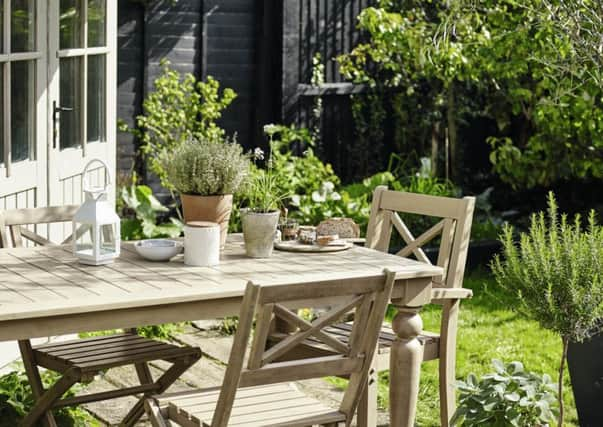Grow a grand design in your garden


In the last property boom, garden grabbing was a profitable activity.
Gardens were classed as brownfield land with a presumption in favour of development to aid self-builders. However, planning rules at the time also demanded high density so developers were quick to combine the two edicts to build multiple properties. They studied aerial maps to see where the biggest, most accessible sites were and helicopters were sent out to scout the most desirable areas.
Advertisement
Hide AdAdvertisement
Hide AdThe coalition government put a stop to the “grabbing” by removing the brownfield status, though this does not prevent a homeowner from turning part of their garden into a building plot, providing the planners agree.
Many of the single dwelling plots now for sale have been carved from existing gardens. How much they sell for depends on the location but in Yorkshire, it is anywhere from £60,000 to £200,000 plus.
So, if you are a homeowner, you could be sitting on a considerable sum of money or the opportunity to build your dream home.
To work out if this is a possibility, look at accessibility and highways issues as these are the main reasons for planning refusal.
Advertisement
Hide AdAdvertisement
Hide AdLoss of residential amenity, which includes overshadowing your neighbours’ properties, is also a main consideration, according to Paul Leeming, who heads up the planning team at Carter Jonas, Harrogate.
“Conservation areas, protected trees and listed buildings can also cause complications,” he says.
You should also check your deeds to see if there are any restrictive covenants. You can do this by checking with the Land Registry. The deeds could be made up of several documents and each one costs £7.
Services, including drains, that run under or over other people’s land or a shared drive, can also be also be an issue .
Advertisement
Hide AdAdvertisement
Hide AdAs most of us are not planning experts, it helps to consult those in the know.
Estate agents are a good starting point. Many of them are also surveyors and have good knowledge of the planning system. They will also give you a valuation for your existing property if you want to go down the self-build route. Planning consultants can be a big help. They offer advice and will liaise with council planning officers to assess what might be acceptable before submitting a pre-planning application. The cost of this could be £2,500 to £3,000.
“Sometimes demolishing the existing house can be the best solution economically,” says Paul Leeming. “We had a case where there was an unexceptional house in the middle of a plot. Demolishing it gave space for seven town houses.”
Leanne and Nigel Green have built a three bedroom home in the garden of their former house. Neighbours objected and it was refused by the local authority on grounds of access. However, they appealed to the planning inspector and the decision was overturned.
Advertisement
Hide AdAdvertisement
Hide Ad“We hired a planning consultant and we also paid for a highway consultant, which really helped. It came at a cost and the whole planning process took about 18 months but it was well worth it,” says Leanne.
The couple now have an energy-efficient, three bedroom home that cost £220,000 to construct and fit out. They managed to get funding for the build by borrowing against the value of their existing property, which had a small mortgage attached to it. Finding a self-build mortgage via a high street lender can be difficult so it is best to approach specialists like Yorkshire-based Ecology Building Society and Buildstore.
Leanne and Nigel sold their Edwardian detached home for £325,000 and are now mortgage free. “It really helped that we lived in our old house until the new one was built. It took longer and cost about 20 per cent more than expected but we have no regrets,” she says.
The tax implications of selling or self-building on a garden plot that is part of your main residence are favourable as there is no capital gains tax payable. However, if you build a new home and sell it on without living in it, you will be liable for tax.
*www.buildstore.co.uk